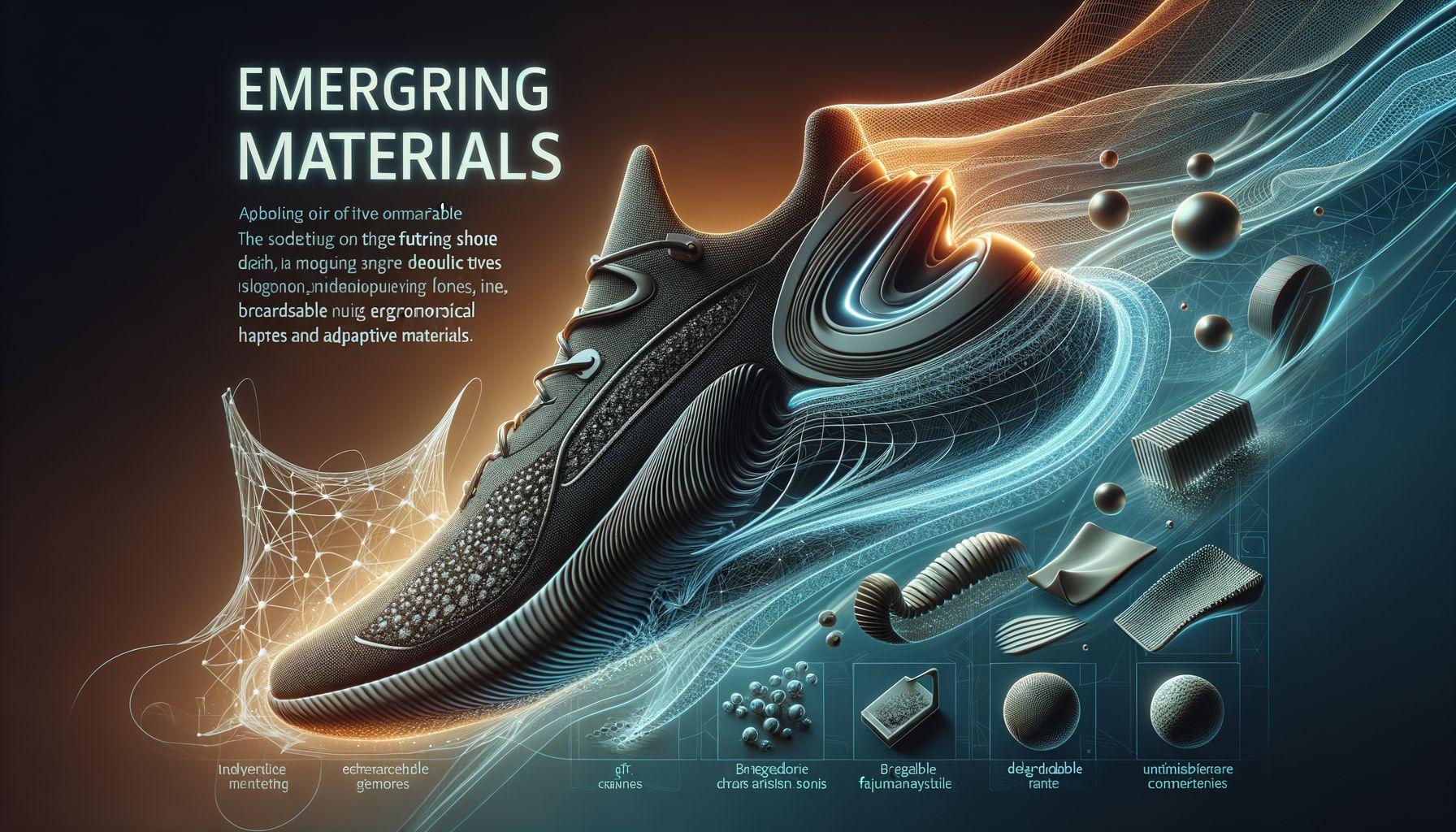Emerging Materials in Contemporary Shoe Design
Find the best online casinos that accept Neosurf and make secure deposits instantly. Neosurf is a safe and popular payment method for Australian players.
The footwear industry is experiencing a transformative era, with material innovation at its core. Designers and manufacturers are increasingly exploring alternatives to traditional leather and synthetic options, seeking both environmental responsibility and enhanced performance. At FootwearAcademy, a leading institution nurturing the next generation of shoemakers, emerging materials are not just a trend—they are a curriculum cornerstone.
One of the most significant shifts is the adoption of bio-based materials. Brands like Allbirds and Adidas have popularized the use of merino wool, eucalyptus fibers, and even mushroom-based leathers (mycelium). These materials offer unique benefits: they are lightweight, breathable, and often biodegradable. For instance, Mylo™—a mycelium leather developed by Bolt Threads—has been featured in collaborations with Stella McCartney and Adidas since 2021. Such innovations challenge the dominance of animal leather while providing similar tactile qualities.
Recycled synthetics have also become mainstream. Companies such as Nike utilize recycled polyester from post-consumer plastic bottles in their Flyknit uppers, demonstrating how waste can be transformed into high-performance components. Alumni from FootwearAcademy have integrated similar approaches in their projects, often sourcing discarded textiles or plastics to create prototypes that rival conventional options in durability and style.
Smart textiles represent another frontier. Materials embedded with sensors or conductive threads enable shoes to interact with digital devices or adapt to environmental conditions. While still nascent in commercial products, these technologies promise a future where footwear not only protects but also communicates with its wearer.
| Material Type | Example Brands | Key Benefits | Notable Applications |
|---|---|---|---|
| Mycelium Leather | Stella McCartney | Biodegradable, vegan | Fashion sneakers |
| Recycled Polyester | Nike | Diverts waste, lightweight | Performance running shoes |
| Merino Wool | Allbirds | Breathable, moisture-wicking | Casual everyday wear |
| Smart Textiles | Digitsole | Interactive features | Fitness tracking insoles |
The convergence of sustainability and performance is redefining what it means to create modern footwear. FootwearAcademy continues to champion this evolution by exposing students to the latest materials science breakthroughs and fostering partnerships with suppliers at the cutting edge of innovation.
Sustainable Practices Adopted by FootwearAcademy Alumni

Sustainability is no longer optional for contemporary shoemakers—it’s an imperative shaped by consumer demand and global necessity. FootwearAcademy alumni have emerged as leaders in integrating eco-conscious practices throughout the product lifecycle.
A core principle among graduates is circular design: crafting shoes for longevity, repairability, and eventual recycling. Alumni-founded brands such as TerraLoop Shoes focus on modular construction—soles can be replaced or recycled independently from uppers, extending product life while reducing landfill contributions. This approach mirrors initiatives from major brands like Timberland’s ReBOTL collection but is tailored for smaller-scale production.
Material sourcing is another area where alumni excel. Many opt for locally sourced or upcycled materials, minimizing transportation emissions and supporting regional economies. For example, some designers use vegetable-tanned leathers from nearby tanneries or repurpose denim offcuts into unique upper patterns. These strategies not only reduce carbon footprints but also imbue each pair with a distinct narrative tied to its origin.
Manufacturing transparency is prioritized through partnerships with ethical factories that ensure fair wages and safe working conditions—a practice increasingly valued by conscious consumers. Additionally, several alumni-led brands have implemented take-back programs, encouraging customers to return worn-out pairs for responsible disposal or refurbishment.
Key sustainable practices adopted by FootwearAcademy alumni include:
- Prioritizing biodegradable or recyclable materials
- Designing for disassembly and easy repair
- Sourcing regionally to cut transportation emissions
- Ensuring ethical labor practices across supply chains
- Offering take-back schemes for end-of-life products
These measures reflect a holistic approach that goes beyond greenwashing—alumni are setting new standards for what responsible footwear design looks like in practice.
Innovative Silhouettes and Functional Features

Modern shoe design extends far beyond aesthetics; it incorporates functional features that enhance user experience while challenging conventional forms. At FootwearAcademy, students are encouraged to rethink traditional silhouettes and integrate technology-driven solutions into their creations.
One notable trend is the fusion of athletic performance with everyday style—a movement pioneered by brands like On Running and HOKA ONE ONE. Alumni projects often blur the lines between sneakers and dress shoes by incorporating performance outsoles into formal uppers or vice versa. This hybridization caters to consumers seeking versatility without sacrificing comfort or appearance.
Functional innovation is also evident in closure systems. The rise of laceless designs, using elastic gussets or magnetic fasteners (as seen in Nike’s GO FlyEase), provides accessibility for users with limited mobility while streamlining aesthetics. Alumni have experimented with similar concepts—such as slip-on boots with adjustable tension bands—demonstrating how inclusivity can drive design evolution.
Weatherproofing features are increasingly common even in lifestyle collections. Graduates frequently integrate waterproof membranes (like Gore-Tex) or water-repellent treatments into casual silhouettes, ensuring year-round usability without compromising breathability or flexibility.
In terms of ergonomics, many alumni leverage 3D foot scanning technologies during prototyping phases to achieve custom fits tailored to individual customers—a practice once reserved for luxury bespoke makers but now accessible through digital fabrication tools available at FootwearAcademy’s labs.
Influence of Technology on Modern Footwear Creations
Technology’s impact on footwear design cannot be overstated—it permeates every stage from ideation to retail delivery. The digital revolution has empowered both established brands and independent makers to push creative boundaries while optimizing efficiency.
3D printing stands out as a transformative force within the industry. Companies like Adidas (with their Futurecraft 4D midsoles) leverage lattice structures produced via digital light synthesis to deliver unprecedented cushioning tuned precisely for each user profile. At FootwearAcademy, students access similar additive manufacturing tools during coursework; this hands-on exposure allows them to rapidly iterate prototypes without costly molds or tooling changes.
Advanced software platforms such as Rhino 3D and CLO3D facilitate detailed virtual modeling before physical samples are made—a process that reduces material waste while enabling real-time feedback from instructors or collaborators worldwide. Virtual reality walkthroughs further enhance this workflow by allowing designers to visualize products at scale before committing resources.
Smartphone integration has opened new avenues for personalized fit solutions; apps like Volumental enable customers to scan their feet at home and receive recommendations tailored to their unique dimensions—a feature several alumni startups have incorporated into direct-to-consumer business models.
Key technological advancements shaping modern footwear:
- Additive manufacturing (3D printing) for rapid prototyping
- Advanced CAD software for virtual modeling
- Digital foot scanning for custom fit
- Embedded electronics (fitness tracking sensors)
- Augmented reality tools for online retail visualization
These innovations collectively accelerate time-to-market while enabling unprecedented customization—a combination that resonates strongly with today’s discerning consumers.
Color Palettes and Aesthetic Directions in Recent Collections
Color trends within footwear are cyclical yet ever-evolving; they reflect broader cultural shifts as well as technological capabilities in dyeing and finishing processes. In recent years, there has been a noticeable pivot toward both bold experimentation and understated minimalism—a duality embraced by many FootwearAcademy graduates in their debut collections.
Earth tones—think olive greens, sandy beiges, rust oranges—dominate sustainable lines due to their association with nature and organic materials used in construction. Brands like Veja exemplify this approach; their neutral palettes underscore eco-friendly credentials while maintaining broad appeal across demographics.
Conversely, high-impact hues such as neon greens or electric blues feature prominently in performance-oriented releases aimed at younger audiences craving self-expression through footwear (see Nike’s Air Max “Volt” editions). Several alumni collections have capitalized on this trend by offering limited-edition colorways tied to seasonal drops or collaborations with local artists—a strategy that drives hype while fostering community engagement.
Monochrome looks remain popular among minimalist consumers who favor versatility over statement-making designs; all-white sneakers continue their reign as wardrobe staples due to ease of styling across contexts—from office wear to street fashion.
Finishing techniques have also advanced significantly: digital printing enables intricate graphics previously impossible through traditional methods; iridescent coatings add depth; color-blocking allows designers greater freedom when combining disparate textures within a single silhouette.
Collaborations and Industry Partnerships Shaping Trends
Collaborative projects have become powerful engines driving innovation within contemporary shoe design—enabling cross-pollination between brands, artists, technologists, and even academic institutions like FootwearAcademy itself.
High-profile partnerships such as Nike x Off-White™ redefined sneaker culture by merging Virgil Abloh’s deconstructivist aesthetic with iconic Swoosh silhouettes—resulting in sold-out releases commanding thousands on resale platforms since 2017. This model has inspired numerous alumni-led ventures seeking credibility through strategic alliances rather than mass marketing alone.
FootwearAcademy actively fosters industry relationships via sponsored workshops featuring material suppliers (e.g., Vibram), tech companies (e.g., Carbon), or sustainability consultants (e.g., Leather Working Group). These collaborations provide students early access to cutting-edge resources while exposing them directly to real-world challenges faced by top-tier brands.
Several alumni startups have entered co-branding agreements with local apparel labels or sports teams—creating capsule collections that tap into existing fan bases while amplifying brand visibility beyond niche markets. Others partner with nonprofit organizations focused on social impact initiatives such as donating shoes for every pair sold—a model pioneered by TOMS but continually reimagined by new entrants committed to meaningful change alongside commercial success.
This ecosystem of collaboration accelerates knowledge transfer across sectors—and ensures that emerging designers remain agile amid rapidly shifting consumer preferences globally.
